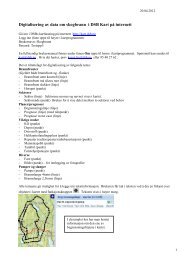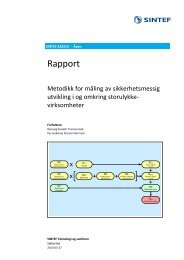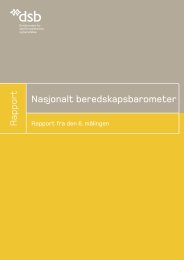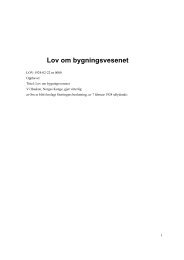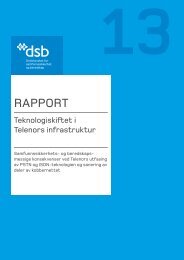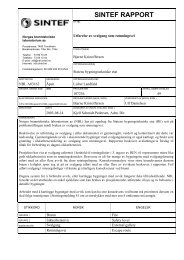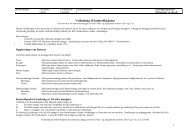Safety regulations related to the maintenance and operation of ...
Safety regulations related to the maintenance and operation of ...
Safety regulations related to the maintenance and operation of ...
- No tags were found...
Create successful ePaper yourself
Turn your PDF publications into a flip-book with our unique Google optimized e-Paper software.
Communication between <strong>the</strong> <strong>Safety</strong> Supervisor <strong>and</strong> <strong>the</strong> Switching Supervisor mustalways be direct, <strong>to</strong> eliminate <strong>the</strong> possibility <strong>of</strong> misunderst<strong>and</strong>ings.§ 16. Live workingLive working may only be conducted by those with sufficient training in live working,<strong>and</strong> <strong>the</strong> work must follow approved methods <strong>and</strong> applicable work procedures.Before live working may commence, any possible fire <strong>and</strong> explosions hazards must beeliminated.Re § 16 Live workingFor live working, two safety barriers are always required.When working on objects that are located inside <strong>the</strong> live-working zone, including directwork on live installation parts (known as live working), additional training is required.Training must be documented.The requirement that work must follow relevant work procedures implies <strong>the</strong>development <strong>of</strong> a procedure for each work task, based on <strong>the</strong> selected working method.§ 17. Work in <strong>the</strong> vicinity <strong>of</strong> live parts – establishingsafety measuresFor work in <strong>the</strong> vicinity <strong>of</strong> a live electrical installation, <strong>the</strong> following safety measuresmust be set up:a) <strong>the</strong> outer limit <strong>of</strong> <strong>the</strong> vicinity zone must be defined <strong>and</strong> marked, <strong>and</strong>b) electrically protective barriers <strong>and</strong>/or boundary barriers must be set up.To ensure that <strong>to</strong>ols or materials cannot possibly result in short-circuiting <strong>and</strong>earthing, <strong>and</strong> that no person can come in<strong>to</strong> contact with live parts, suitable protectivebarriers must be used where necessary.It is important that <strong>the</strong>se protective barriers are suited <strong>to</strong> <strong>the</strong> type <strong>of</strong> work involved <strong>and</strong><strong>the</strong> correct voltage level, <strong>and</strong> that <strong>the</strong>y are in good condition.If <strong>the</strong> safety measures mentioned above cannot be used in full, ano<strong>the</strong>r working methodmust be employed.26



